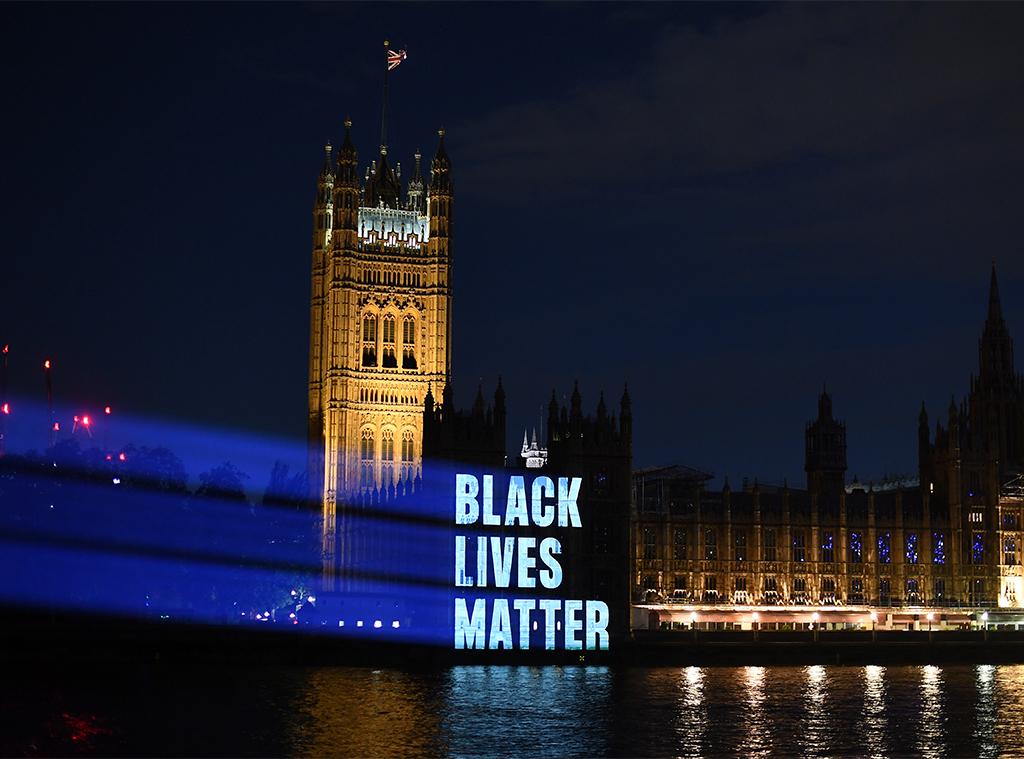
Victoria Jones/PA Wire; AP Images
On Feb. 26, 2012, 17-year-old Trayvon Martin was shot to death while on his way back to the house he was visiting in a gated community in Sanford, Fla.
A month later, President Barack Obama, making his first public remarks about the case, said, “If I had a son, he’d look like Trayvon.” A full investigation into what happened was imperative, he said.
On July 13, 2013, George Zimmerman—a volunteer neighborhood watch commander who saw Trayvon walking in his neighborhood, decided he might be a threat, followed him, confronted him and, after a brief scuffle, ultimately killed him—was acquitted on charges of second degree murder and manslaughter.
Appalled by the verdict, Patrisse Cullors, Alicia Garza and Opal Tometi took action.
Though it tends to feel that certain movements spring fully formed onto the pages of newspapers, into the cable news headlines and into Twitter feeds, they all started out as an idea. A thought that originates in a person’s brain, which perhaps then becomes a hashtag, or a T-shirt slogan, and sometimes even an actual call to action.
Or, in the case of Black Lives Matter, all of the above, and a cultural reckoning.
“The one thing I remember from that evening, other than crying myself to sleep that night, was the way in which as a black person, I felt incredibly vulnerable, incredibly exposed and incredibly enraged,” Garza, then the special projects director of the National Domestic Workers Alliance in Oakland, Calif., said in recalling the day she saw the Zimmerman verdict pop up on Facebook. She was in a local bar with her husband, and they were surrounded by people disheartened by the news.
She told The Guardian in 2015, “Seeing these black people leaving the bar, and it was like we couldn’t look at each other. We were carrying this burden around with us every day, of racism and white supremacy. It was a verdict that said: black people are not safe in America.”
Garza went home and posted on Facebook, writing, “I continue to be surprised at how little black lives matter.” She concluded with, “Black people. I love you. I love us. Our lives matter.”.”
Cullors, an artist, teacher and prison reform activist from Los Angeles, reposted Garza’s message, adding the hashtag “#blacklivesmatter.”
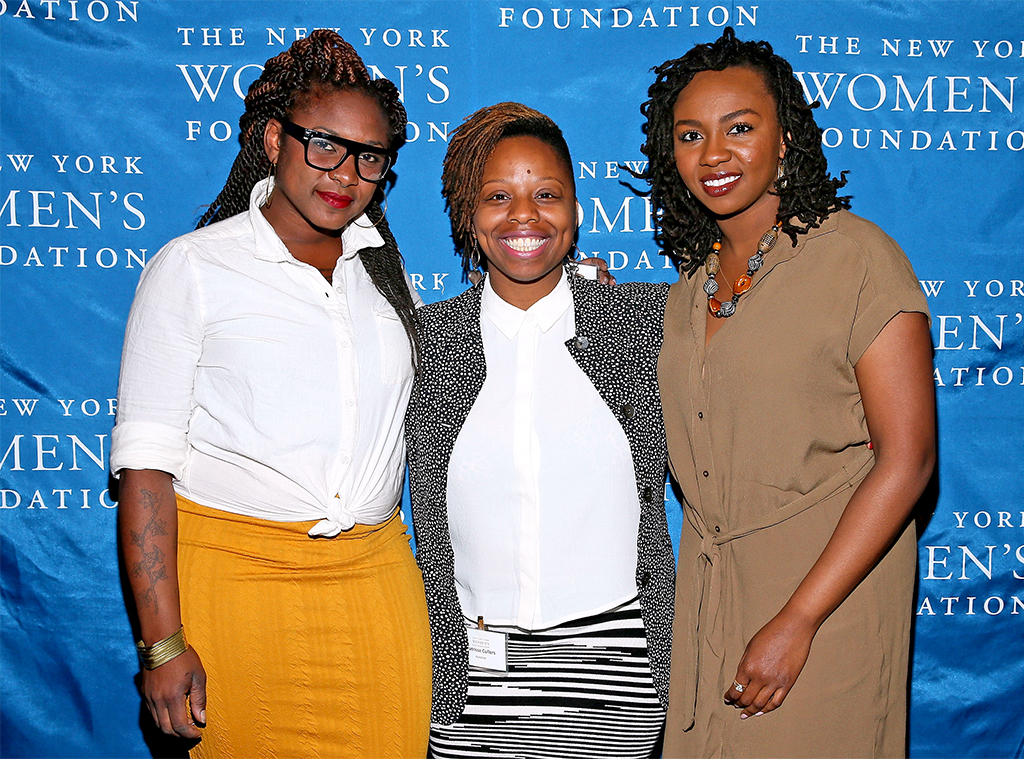
Jemal Countess/Getty Images
The next day Garza and Cullors—friends for 10 years since meeting at a conference for activists—talked about what they could do to actually effect change, to wake the rest of the world up to the fact that what happened to Trayvon Martin wasn’t some sort of freak occurrence, but that his death and countless others were linked, all part of the pattern of racism embedded in this nation’s very fabric.
Opal Tometi, who was executive director of the Black Alliance for Just Immigration in New York City, saw the hashtag online and called Garza. ”I felt a sense of urgency about the next steps we could take together to change the story,” Tometi recalled to Glamour in 2016, when the trio were honored at the magazine’s Women of the Year banquet.
She explained to Cosmopolitan in 2016, “It was really my younger brother who [is in his late teens] who inspired me to get involved in this kind of work. I’ve learned a lot from him and his life, and when Trayvon Martin was murdered and George Zimmerman was acquitted, he was the first person who came to my mind. This movement and the new tools that we’re using allows for new generations to get involved and see themselves as part of the change that’s possible in our country.”
So after connecting with Garza and Cullors, whom she was meeting for the first time, Tometi bought the domain name and built their digital platform, including social media accounts where they encouraged people to tell their stories, using the tag #blacklivesmatter. Demonstrations had sprung up the very night of the Zimmerman verdict, but the first planned BLM demonstration in Los Angeles was a march to Rodeo Drive in Beverly Hills.
“It’s deliberate. We’ve done that from the beginning,” Melina Abdullah, co-founder of the Black Lives Matter Los Angeles chapter, told The American Prospect. “The day George Zimmerman was acquitted, we all went to Leimert Park. That’s where everybody black went when something happened; you didn’t need a Facebook post. People were milling around, hugging each other. Then we decided to march. I had a debate with another organizer who wanted to march south down Crenshaw Boulevard. I was holding a bullhorn, and I yelled into it, ‘Go north!’ If you go south into black neighborhoods, nobody cares what you do. If you go north into whiter, more affluent neighborhoods, they do.”
The phrase made the rounds. They were hardly the only group that formed in the wake of Martin’s death, but they were the ones to most effectively harness the power of social media. But, as Tometi recalled to The New Yorker recently, “we began more as a platform and a space to develop community and share analysis.”
Then on Aug. 9, 2014, in Ferguson, Mo., a police officer shot and killed 18-year-old Michael Brown Jr.
Brown had been accused of stealing a few packs of cigarillos from a convenience store and then walking off with his buddy. Officer Darren Wilson heard the dispatch call and, when he spotted the two men who fit the description provided, blocked the roadway with his SUV and radioed for backup. According to the 86-page report on what transpired that was released in 2015 by the U.S. Department of Justice, Brown blocked the door when Wilson tried to get out, they exchanged words and, Wilson said, Brown punched him through the driver’s side window.
Wilson fired his gun twice, hitting Brown in the hand. Brown started to run down the street. Wilson got out of the SUV and Brown, who had run about 180 feet away, turned and started to walk back toward Wilson (according to multiple eye witnesses interviewed by federal investigators). Wilson told investigators that he instructed Brown to get down on the ground but the young man kept walking toward him and then reached for his right waistband. Wilson then proceeded to fire 10 more bullets, hitting Brown at least six times, including in the chest and forehead.
A paramedic pronounced Brown—who had been unarmed—dead at the scene. His body remained there for four hours, giving local residents plenty of time to gather around and grow increasingly infuriated about both the seeming disregard for Brown’s humanity and the actions of the police.
Protests began the next day.
Hearing about the events in Missouri, Cullors, Garza and Tometi organized a Black Lives Matter Freedom Ride to Ferguson that more than 500 people signed up for from all over the country.
But by then, the phrase had taken on a life of its own: it was on the lips of protesters far and wide, people whom the founders had never interacted with before; the hashtag punctuated countless posts online; and it quickly became a part of the cultural lexicon, eventually invoked by President Obama, by Beyoncé, by athletes, by Law & Order: SVU.
In January 2015, the American Dialect Center selected #blacklivesmatter as its word of the year. In 2016, Garza was California Rep. Barbara Lee‘s guest at Obama’s final State of the Union address. In 2017, they received the Sydney Peace Prize, Australia’s leading honor for global peacemakers.
“From my youngest brother to immigrant women to black queer folks, those are the people who keep me going,” Tometi told Glamour. “When I think about their various acts of courage, it reminds me that I am not alone and that we can do even more and we deserve more, so we have to keep going… We have built a sisterhood, a community. Friends and people who’d look out for you, who have your back, who inspire you but also challenge you. And you can rise together.”
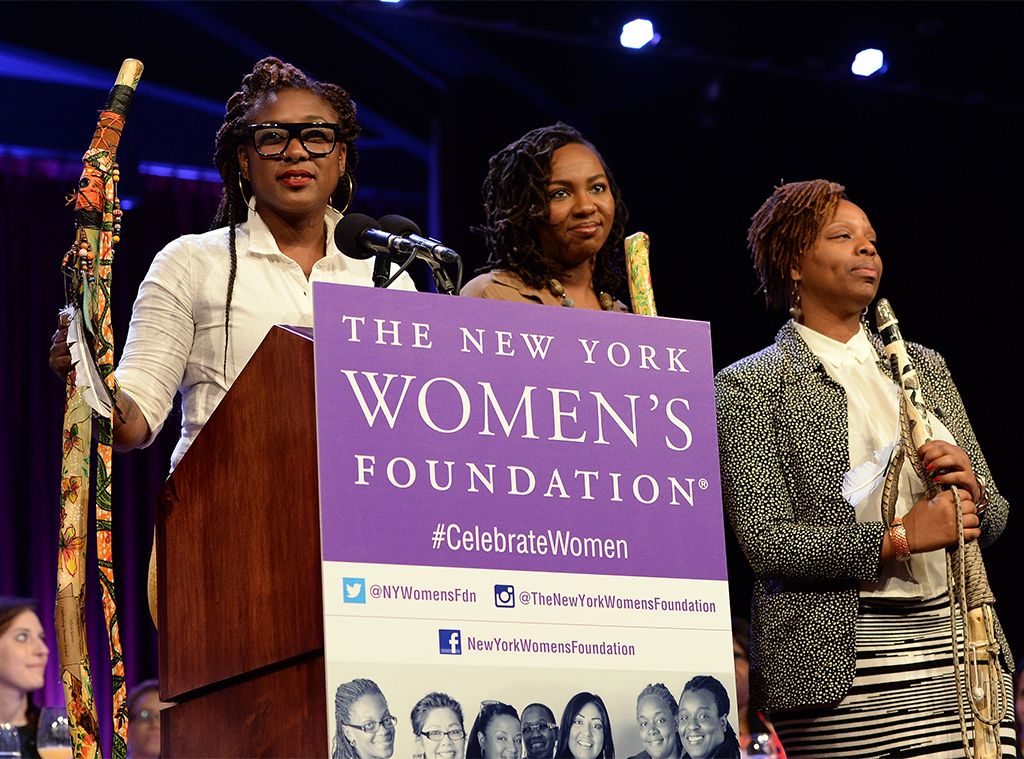
Slaven Vlasic/Getty Images
Of course, nothing is that simple. It wasn’t a rallying cry that simply lived happily ever after.
Naysayers and more virulent opponents treated the phrase “Black Lives Matter” with disdain and falsely smeared the group as an anti-police, racist-against-white-people band of havoc wreakers. “All lives matter” became the knee-jerk response from those who refused to acknowledge or even try to understand the message at the core of the BLM movement.
“The reality, of course, is that they do,” Garza told The Guardian, “but we live in a world where some lives matter more than others. ‘All Lives Matter’ effectively neutralizes the fact that it’s black people who are fighting for their lives right now.”
Then, as the 2016 presidential race heated up, critics who otherwise supported BLM accused them of not having a clearer mission statement as racial tensions flared around the country.
“The fundamental, ongoing problem here is apparently that the vast majority of protesters don’t have any specific agenda that they’re arguing for,” David J. Garrow, the Pulitzer Prize-winning author of Bearing the Cross: Martin Luther King Jr. and the Southern Christian Leadership Conference, remarked to the Los Angeles Times in July 2016.
But, as those leading the renewed charge for equality and economic, social and political justice would argue, the times had a-changed.
“After King was assassinated in 1968, the baton was basically dropped on the street,” lawyer and professor Nekima Levy-Pounds, who at the time was president of the Minneapolis chapter of the NAACP, told the Times as well. “For the younger generation, there’s not much we can point to since King’s assassination that’s been accomplished, so those folks are not necessarily in a position to tell young activists what to do.”
“As organizers, we have to think every day are we making an impact,” Cullors told the Los Angeles Times in 2017. “Are we changing the material conditions for black people? I think, yes, we’ve had an impact. I think part of what we’re seeing in the rise of white nationalism is their response to Black Lives Matter, is their response to an ever-increasing fight for equal rights, for civil rights and for human rights.”
Not that there haven’t been issues with the way a story unfolds. Legends take hold, faulty details get passed around, one version of events runs away with the narrative.
Protesters chanting “Hands up, don’t shoot!” and holding their hands in the air became the lingering image in the wake of Michael Brown’s death—although the Justice Department investigation later determined that Brown’s hands weren’t up when he was shot, nor was he shot in the back, as the friend who had been with Brown that day originally told authorities. The DOJ concluded that Wilson acted in self-defense and didn’t violate Brown’s civil rights.
“Now that black lives matter to everyone, it is imperative that we continue marching for and giving voice to those killed in racially charged incidents at the hands of police and others,” wrote the Washington Post‘s Jonathan Capeheart, who had previously criticized the decision not to indict Wilson but was still heartened by the attention being paid, in 2015. “But we must never allow ourselves to march under the banner of a false narrative on behalf of someone who would otherwise offend our sense of right and wrong. And when we discover that we have, we must acknowledge it, admit our error and keep on marching. That’s what I’ve done here.”
And when critics smell blood in the water, they won’t even wait for you to throw them meat, and BLM critics had a revolting field day with the Department of Justice’s findings.
But BLM’s primary message, that Brown should be alive—that better police training, a better social framework, more educational and economic opportunity for communities of color, less animosity between African-Americans and law enforcement, an end to the racism embedded in the whole criminal justice system, any or all of which could have resulted in a better outcome—still resonated loud and clear.
Because a second DOJ report also found that the Ferguson Police Department was a mess, that cops frequently abused their authority in the community and trampled on black residents’ civil rights. A tragedy all around.
“The first thing that Black Lives Matter had to do was remind people that racism existed in this country because when we had Obama people thought we were post-racial,” Cullors told the Times.
“That was the debate. Is racism over? And very quickly we understood that it was not over. And then the second one was to talk about anti-black racism. And then I think the next step for Black Lives Matter was to decide, ‘What was our target?'”

Allison Joyce/Getty Images
Cullers, Garza and Tepeti founded BLM in order to make it known that what happened to Trayvon Martin was reflective of the dangers that black people face every day—not just from cops, not just by being targets of pointed discrimination, but while simply minding their own business.
Going about the business of living, as Trayvon was, walking to his father’s fiancée’s house carrying an iced tea and Skittles from 7-11. As was Tamir Rice, a 12-year-old boy shot dead in 2014 by a Cleveland cop who claimed he mistook the boy’s replica Airsoft gun for a real weapon. As was Philando Castile, a Minneapolis man shot to death in his car in 2016 during a traffic stop after informing the officer he had his own gun in the vehicle and tried to assure him he was not reaching for it as his partner and 4-year-old daughter watched in horror. As was Ahmaud Arbery, a 25-year-old man killed in February while out for a jog near Brunswick, Ga., cornered and shot by a father and son who claimed Arbery matched the description of an area burglary suspect. As was Breonna Taylor, a 26-year-old EMT who was shot and killed in her bed in March by a Louisville police officer, one of three who burst into her apartment at 1 a.m., later claiming they were executing a search warrant related to a suspect in a drug case who had already been arrested.
And those are just a few examples of the cases that got national attention. Eric Garner. Walter Scott. Freddie Gray. Sandra Bland. The Charleston Nine, murdered by white supremacist Dylan Roof in their church. People were watching and paying more attention, and protests continued. But the list kept growing.
Then, on May 25, a Minneapolis cop, in the course of arresting George Floyd, put his knee on the man’s neck and held it there for 8 minutes and 46 seconds. Floyd, a 46-year-old father of five, originally from Houston and well-known back home and in his adopted community, was suspected of trying to pass a counterfeit $20 bill.
Cell phone video has shown Floyd struggling to breathe, calling to his late mother, expressing fear he was going to die. Two other cops helped restrain Floyd, and a fourth stood nearby. People gathered around them can be heard shouting at the cops to stop. A bystander shouts, “He’s dying. You’re f–king killing him!”
The scene was chillingly reminiscent of what happened to Eric Garner in 2014. The 43-year-old died after a white NYPD officer put him in a chokehold while attempting to arrest him for selling cigarettes on the street. Garner could be heard gasping ”I can’t breathe” 11 times. That cop remained on the force until he was fired in 2019.
George Floyd’s death was ruled a homicide and the now former police officer who k on Floyd’s neck, Derek Chauvin, has been charged with second-degree murder (bumped up from third-degree) aept his kneend second-degree manslaughter. The other three are charged with aiding and abetting second-degree murder and aiding and abetting second-degree manslaughter.
But though all four were promptly fired, Chauvin wasn’t arrested until three days after people took to the streets. The other men were charged on June 3. Meanwhile, streets remain full of protesters around the country.
And though it’s all happened before, Opal Tometi is getting the feeling that this time is different. And not only because up until recently it wouldn’t even have felt like a given that these cops would lose their jobs.
She recognizes the sadness, the outrage, the desperation, the dwindling patience, the zero f–ks left to give. That’s all familiar. But the protests that have been taking place since Floyd’s death, first in Minneapolis, then in other major U.S. cities, then in smaller burgs and then in other countries, seem like something else.
“I absolutely think people are concerned with police brutality,” Tometi, a daughter of Nigerian immigrants who grew up in Phoenix, told the New Yorker last week. “Let me make that absolutely clear. We have been fighting and advocating to stop a war on black lives. And that is how we see it—this is a war on black life.”
But this unprecedented moment is also in no small part due to the COVID-19 pandemic, which forced millions of people out of work and put an unavoidable spotlight on the built-in inequities in American society, with even the virus having an outsize effect on black and brown communities.
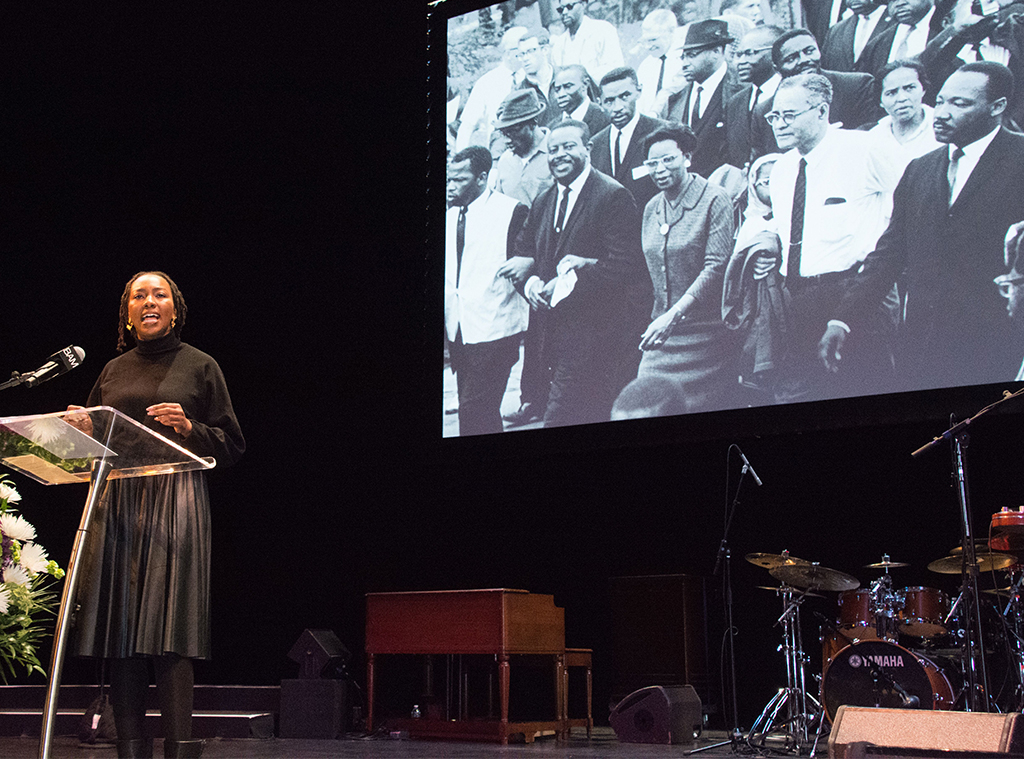
M Stan Reaves/Shutterstock
People, or BLM supporters at least, understand their ongoing problem with the police, Tometi said.
“But I would say,” she continued, “that there is something about the economic conditions in addition to the lethal force we are seeing every day that makes this moment feel different, where people are making different kinds of demands. We do a lot of work with the Movement for Black Lives and a number of organizations and individuals and different leaders who are part of that formation, and we have been calling for the defunding of police, a moratorium on rent, a moratorium on mortgages and utilities. We need to not have people’s utilities shut off—their light, their water, and just basic needs that people have.
“So, our demands are also reflective of the fact that when we started Black Lives Matter, it wasn’t solely about police brutality and extrajudicial killing. That was a spark point, but it was very intentional for us to talk about the way that black lives are cut short all across the board. You can talk about the quality of our life in terms of housing and education and health-care systems and the pandemic and what we are seeing there. So for us it has been more comprehensive than just the criminal-justice system and policing. It’s bigger than that.”

Marcus Yam/Los Angeles Times via Getty Images
For instance, when COVID-19 was first declared a pandemic in March, Cullors teamed up with Reform L.A. Jails to arrange for the release of as many non-violent offenders, people awaiting hearings who couldn’t afford bail, people close to their release dates, etc., as possible, jails and prisons primed to become potential hotbeds for spreading the novel coronavirus.
“Advocates on the ground have been challenging mass incarceration for so long—and now much of what we’ve been calling for, pre-COVID-19, we’re seeing it transpire,” Cullors told the New Yorker last month. “At the local, state, and national level, this is a moment when we can collectively transform how our country relates to the most vulnerable.”
All food for thought, especially since so much of the loud, vocal, vivid, in-your-face activism tends to unfold over a certain period of time before dwindling, leaving those committed to unearthing the root of the problems to toil in unglamorous solidarity behind the scenes.
Naturally, justice for Ahmaud Arbery, Breonna Taylor and George Floyd has been taken up with a vengeance by celebrities, influencers and others with platforms who are busy amplifying the BLM message.
But there is reason to hope that the drive to not just push back against racism but to be actively anti-racist, to actively go about protecting and lifting up black lives, continues, long after the protests have died down; long after we’re back to posting brunch selfies from actual restaurants; and long after we start to get tired because, sure, we’ve done some things but there’s still so much more to do.
There are localized chapters of BLM around the country and in Canada, though primarily the way the group functions is the same as how it did early on, Tometi explained.
“We end up seeing that there are commonalities and trends in what is going on with different police forces or other issues,” she said. “So some chapters are more focused in the education system. Some are more focused on working with sex workers who are abused. So different chapters might take on different issues, but there is this throughline of valuing black life and understanding that we are not a monolith but being radically inclusive in terms of chapter makeup.”
For instance, Black Lives Matter DC didn’t mince words Friday when District of Columbia Mayor Muriel Browder christened a stretch of 16th Street that leads toward the White House “Black Lives Matter Plaza,” DC Public Works Department employees having painted “BLACK LIVES MATTER” on the block in bold yellow letters.
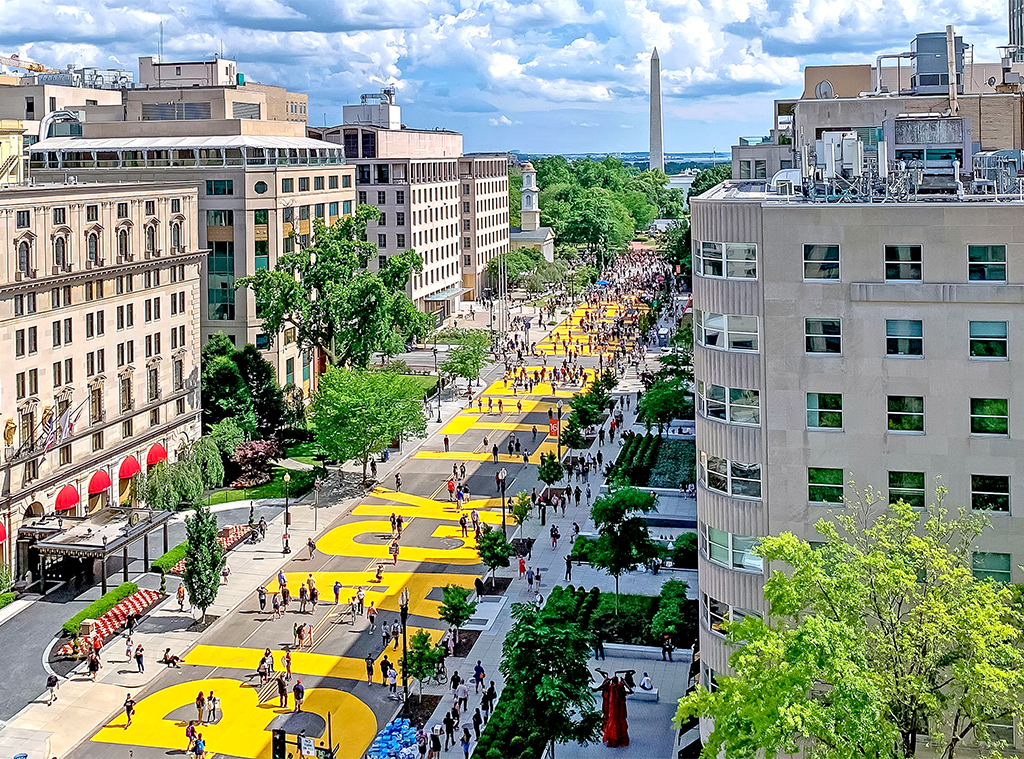
CARLOS VILAS DELGADO/EPA-EFE/Shutterstock
“There are people who are craving to be heard and to be seen, and to have their humanity recognized, and we had the opportunity to send that message loud and clear on a very important street in our city,” Bowser said at a press conference, per NBC News. “And it is that message, and that message is to the American people, that Black Lives Matter, black humanity matters, and we as a city raise that up as part of our values as a city.”
“This is a performative distraction from real policy changes,” the DC chapter of BLM fired off in a tweet. “Bowser has consistently been on the wrong side of BLMDC history. This is to appease white liberals while ignoring our demands. Black Lives Matter means defund the police.”
(For the record, “defund police,” a demand you’ve probably been seeing a lot of lately on social media, does not necessarily mean disbanding all police forces or not paying police officers to do their jobs, but rather it largely refers to diverting funds more directly to the people. Cullors explained to the LA Times in 2017, “Over the last 30, 40 years what we’ve seen is the pouring of millions of dollars into law enforcement and literally divesting from communities, especially poor communities. And so our argument is… they can start divesting from law enforcement and reinvesting into our communities.”)
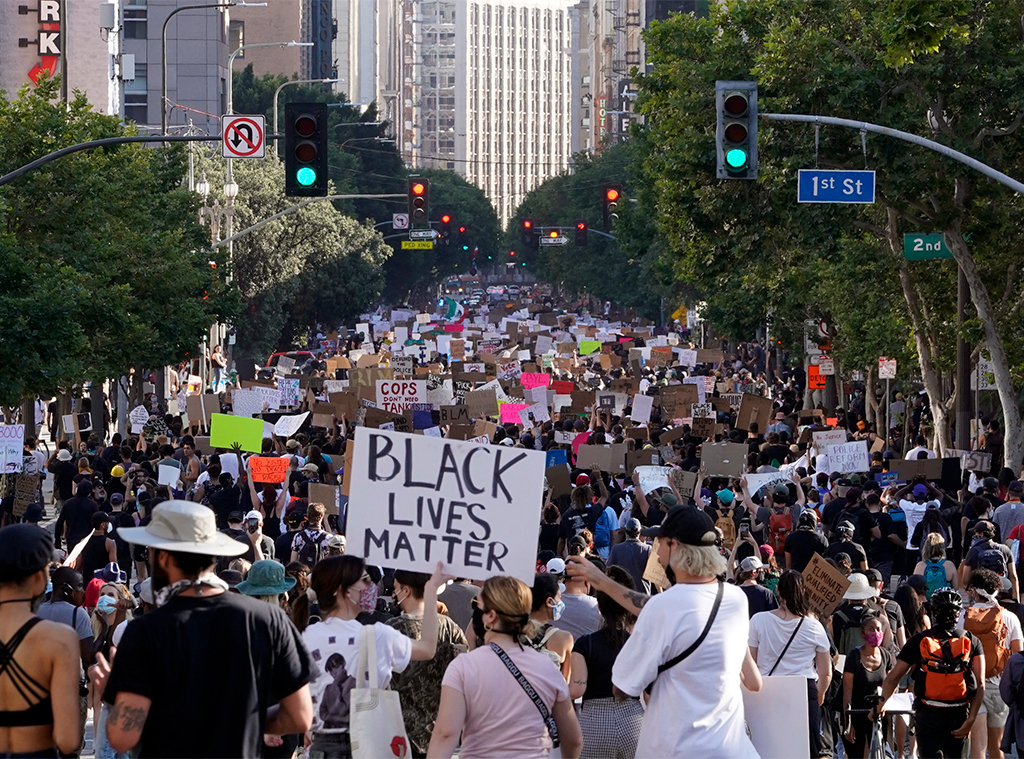
Warrick Page/Getty Images
Speaking of distractions, asked about the vandalism and looting that’s been constantly threatening to steal the spotlight from the mission at hand and all the people who are trying to help, Tometi acknowledged it was a complicated conversation but that she simply doesn’t “equate the loss of life and the loss of property.”
Overall, however, she’s heartened by what she’s seeing at these demonstrations from around the world.
“I am really amazed and so moved by the thousands if not millions of courageous people who have made the decision to go to the streets. I am so in awe of them. They are so brave, and those are the people our country has needed for so long.”
Yes, Black Lives Matter is focused on saving and lifting up black lives specifically, not just on this incident-by-incident basis, but through many avenues of reform, not just this week or this month or this year, but for as long as it takes. And ultimately that is good for everyone. A more just, equitable and caring society helps us all.
“E! stands in solidarity with the black community against systemic racism and oppression experienced every day in America,” the network said in a statement on May 31. “We owe it to our black staff, talent, production partners and viewers to demand change and accountability. To be silent is to be complicit. #BlackLivesMatter.”
